Abstract
Studies were carried out to elucidate the nature and importance of Fe3+ reduction in anaerobic slurries of marine surface sediment. A constant accumulation of Fe2+ took place immediately after the endogenous NO3− was depleted. Pasteurized controls showed no activity of Fe3+ reduction. Additions of 0.2 mM NO3− and NO2− to the active slurries arrested the Fe3+ reduction, and the process was resumed only after a depletion of the added compounds. Extended, initial aeration of the sediment did not affect the capacity for reduction of NO3− and Fe3+, but the treatments with NO3− increased the capacity for Fe3+ reduction. Addition of 20 mM MoO42− completely inhibited the SO42− reduction, but did not affect the reduction of Fe3+. The process of Fe3+ reduction was most likely associated with the activity of facultative anaerobic, NO3−-reducing bacteria. In surface sediment, the bulk of the Fe3+ reduction may be microbial, and the process may be important for mineralization in situ if the availability of NO3− is low.
Full text
PDF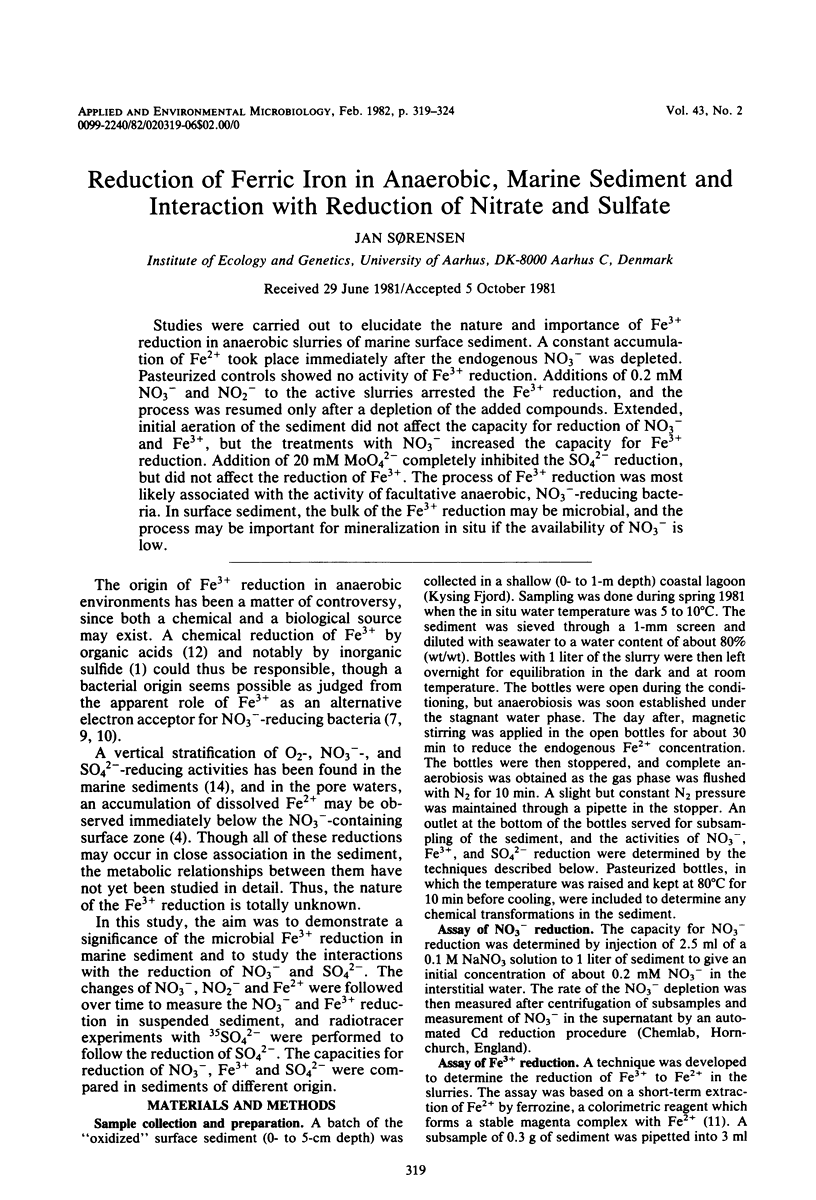
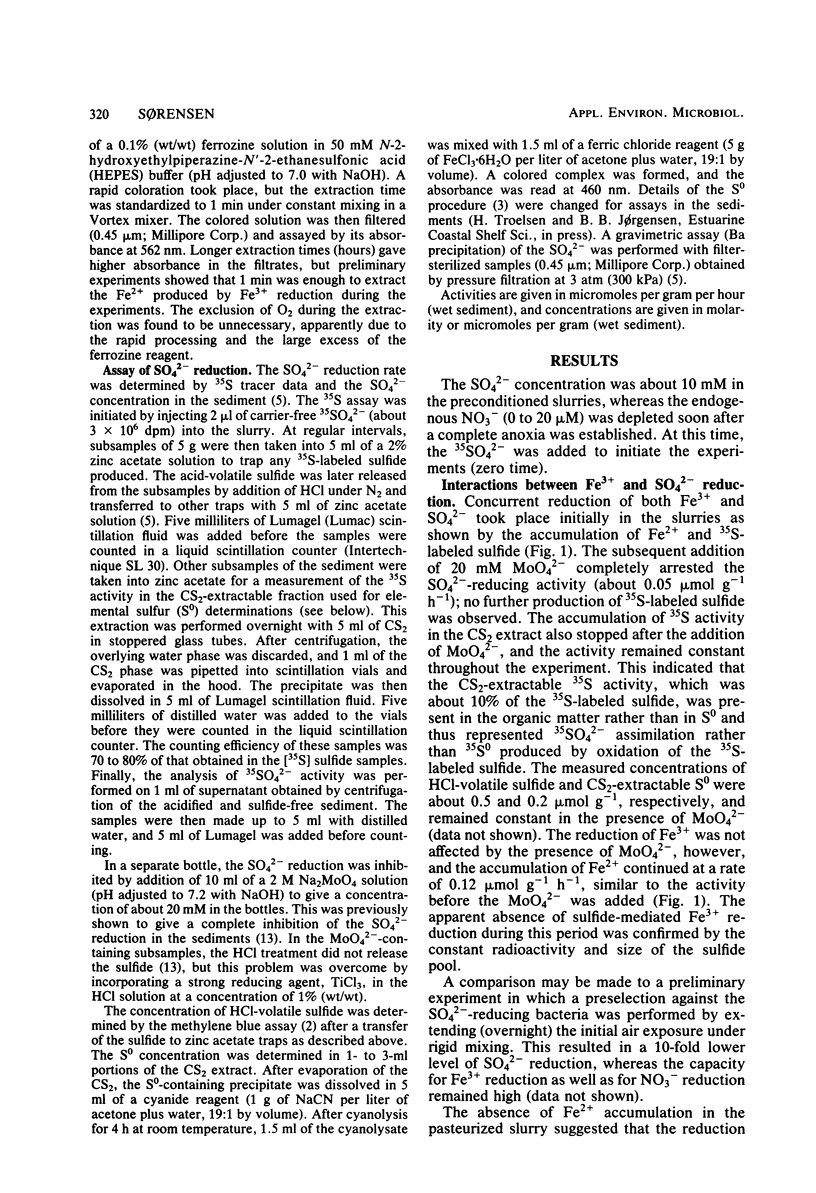
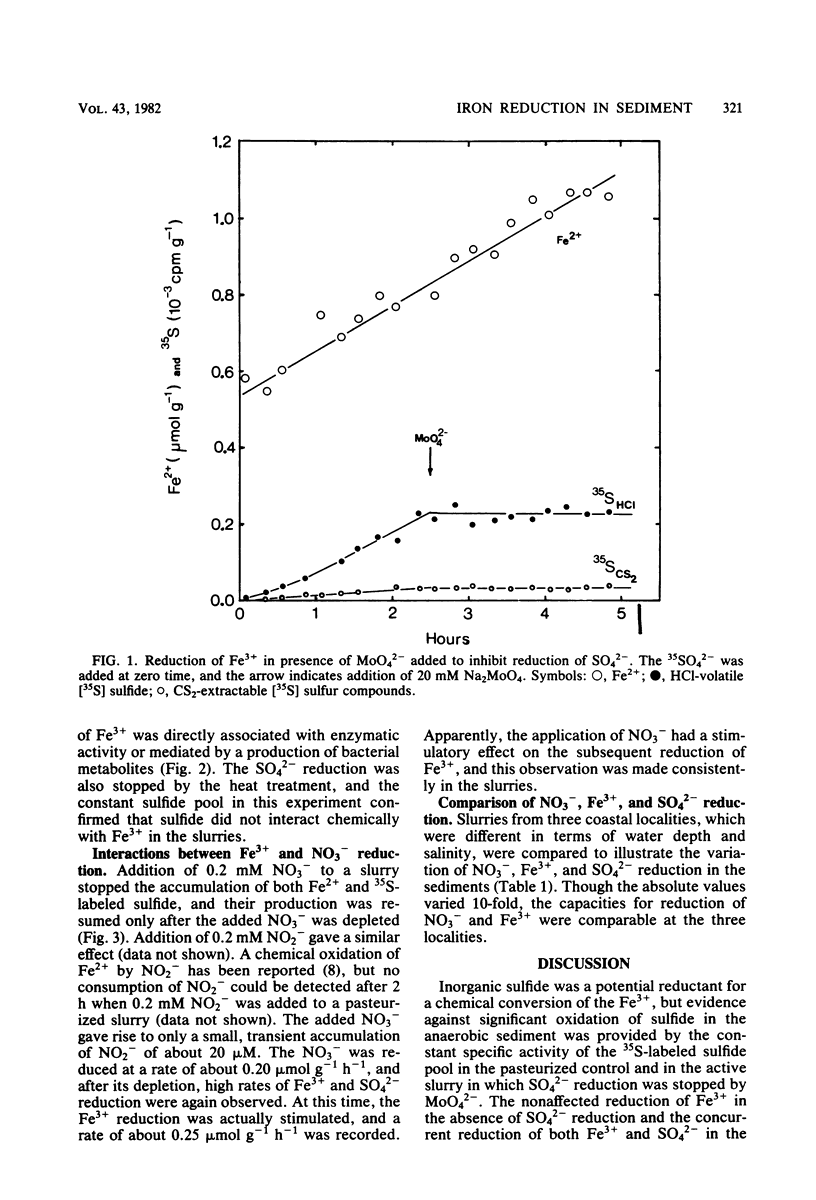
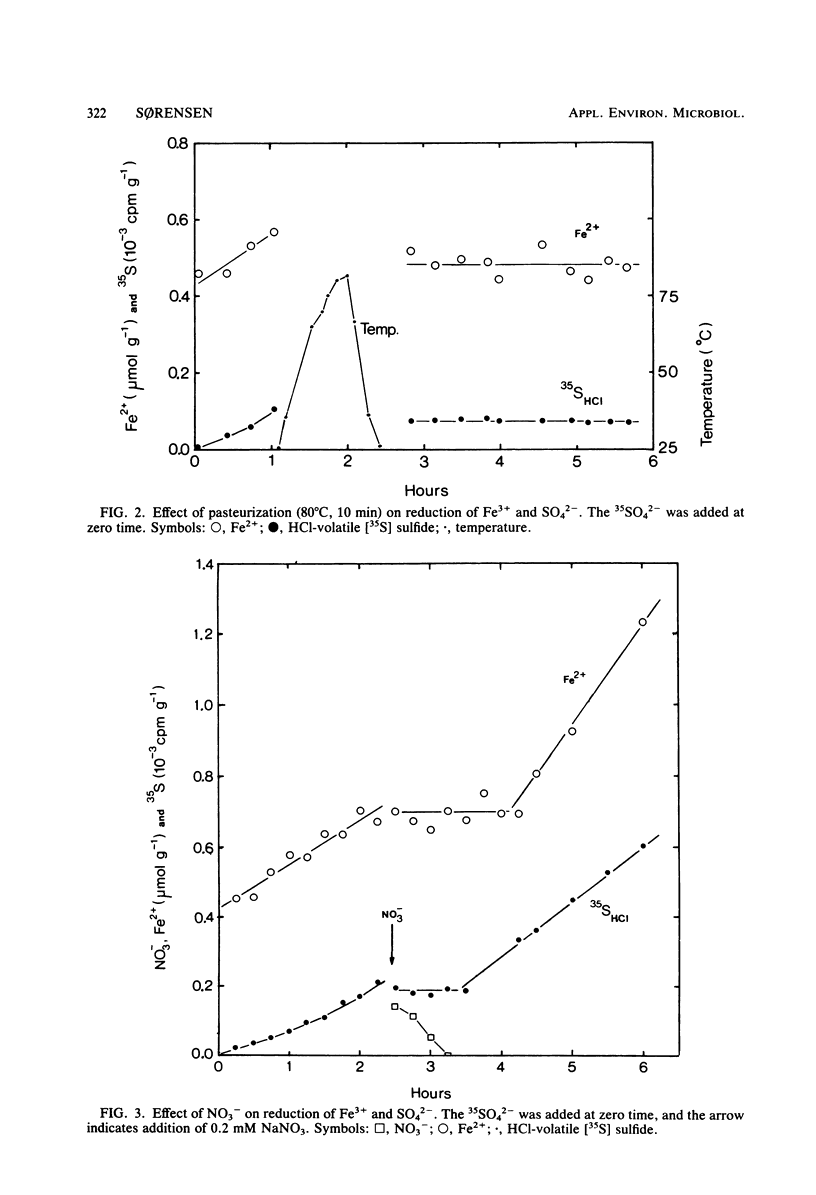
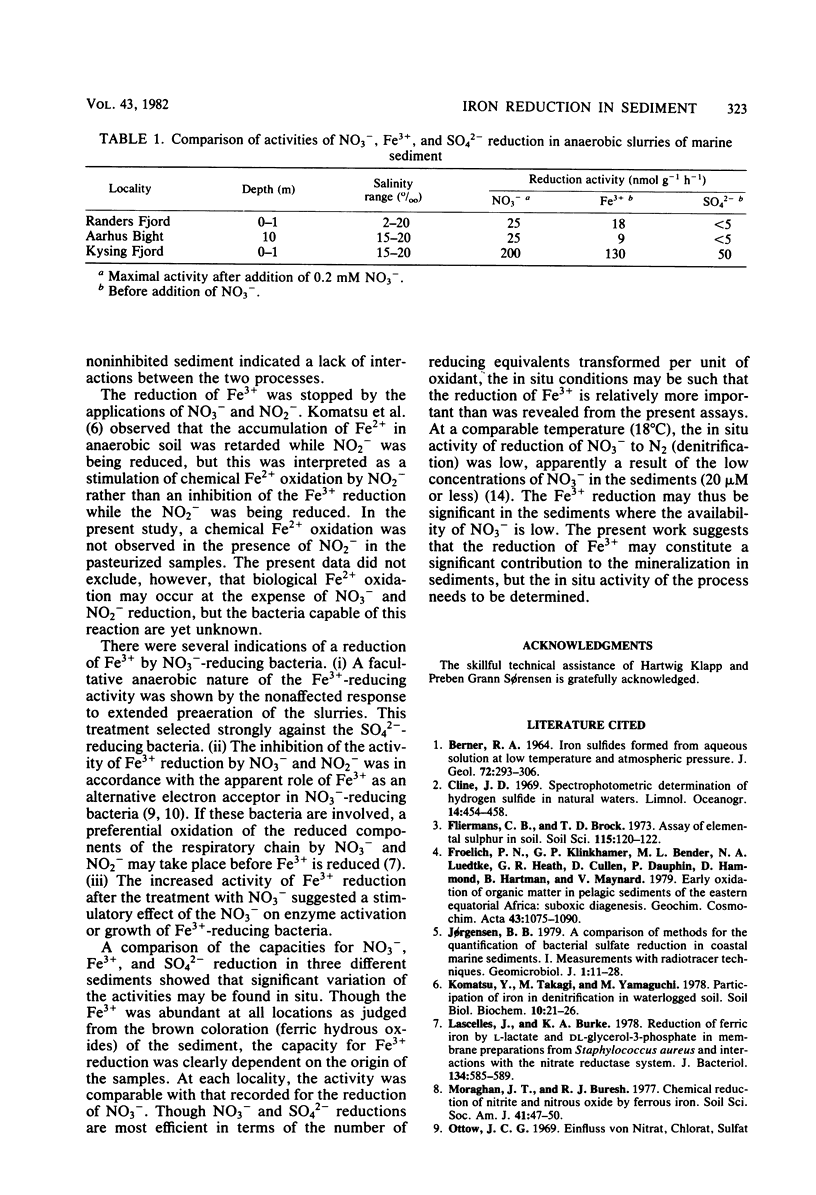
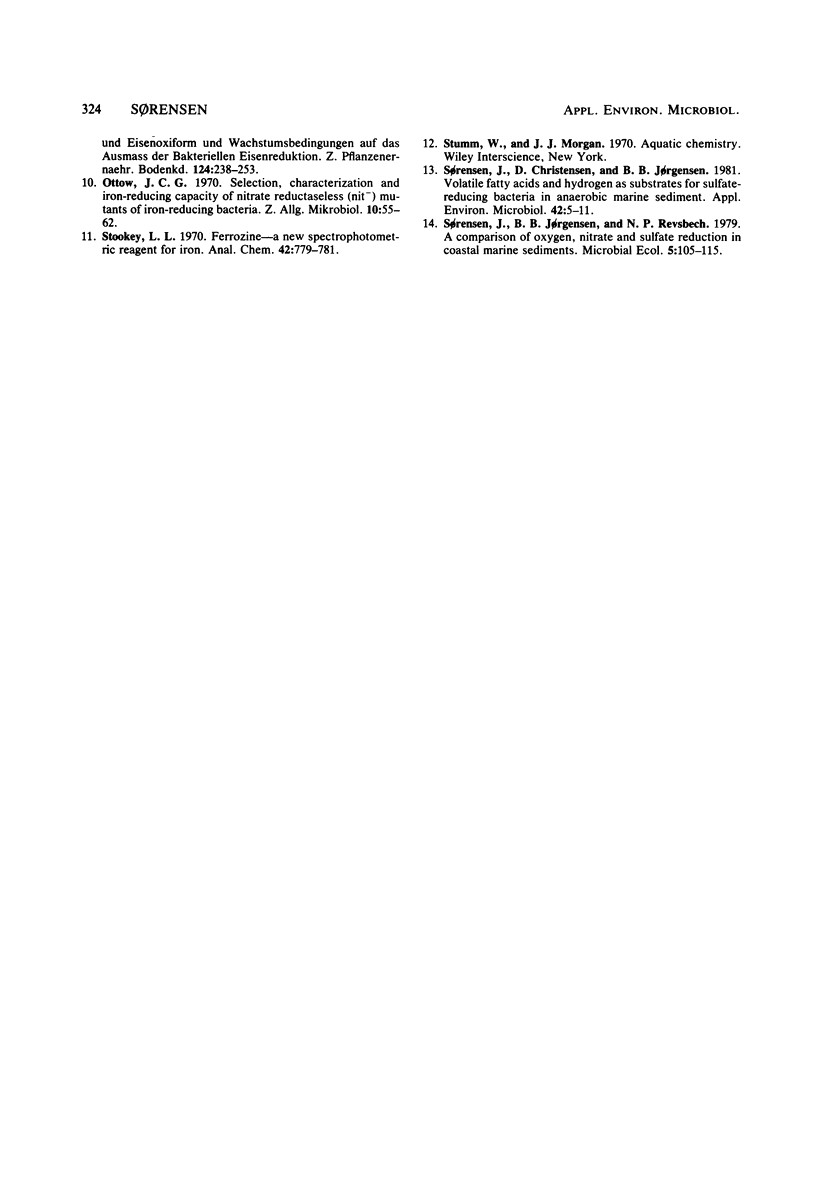
Selected References
These references are in PubMed. This may not be the complete list of references from this article.
- Lascelles J., Burke K. A. Reduction of ferric iron by L-lactate and DL-glycerol-3-phosphate in membrane preparations from Staphylococcus aureus and interactions with the nitrate reductase system. J Bacteriol. 1978 May;134(2):585–589. doi: 10.1128/jb.134.2.585-589.1978. [DOI] [PMC free article] [PubMed] [Google Scholar]
- Ottow J. C. Selection, characterization and iron-reducing capacity of nitrate reductaseless (nit-) mutants of iron-reducing bacteria. Z Allg Mikrobiol. 1970;10(1):55–62. [PubMed] [Google Scholar]
- Sørensen J., Christensen D., Jørgensen B. B. Volatile Fatty acids and hydrogen as substrates for sulfate-reducing bacteria in anaerobic marine sediment. Appl Environ Microbiol. 1981 Jul;42(1):5–11. doi: 10.1128/aem.42.1.5-11.1981. [DOI] [PMC free article] [PubMed] [Google Scholar]


